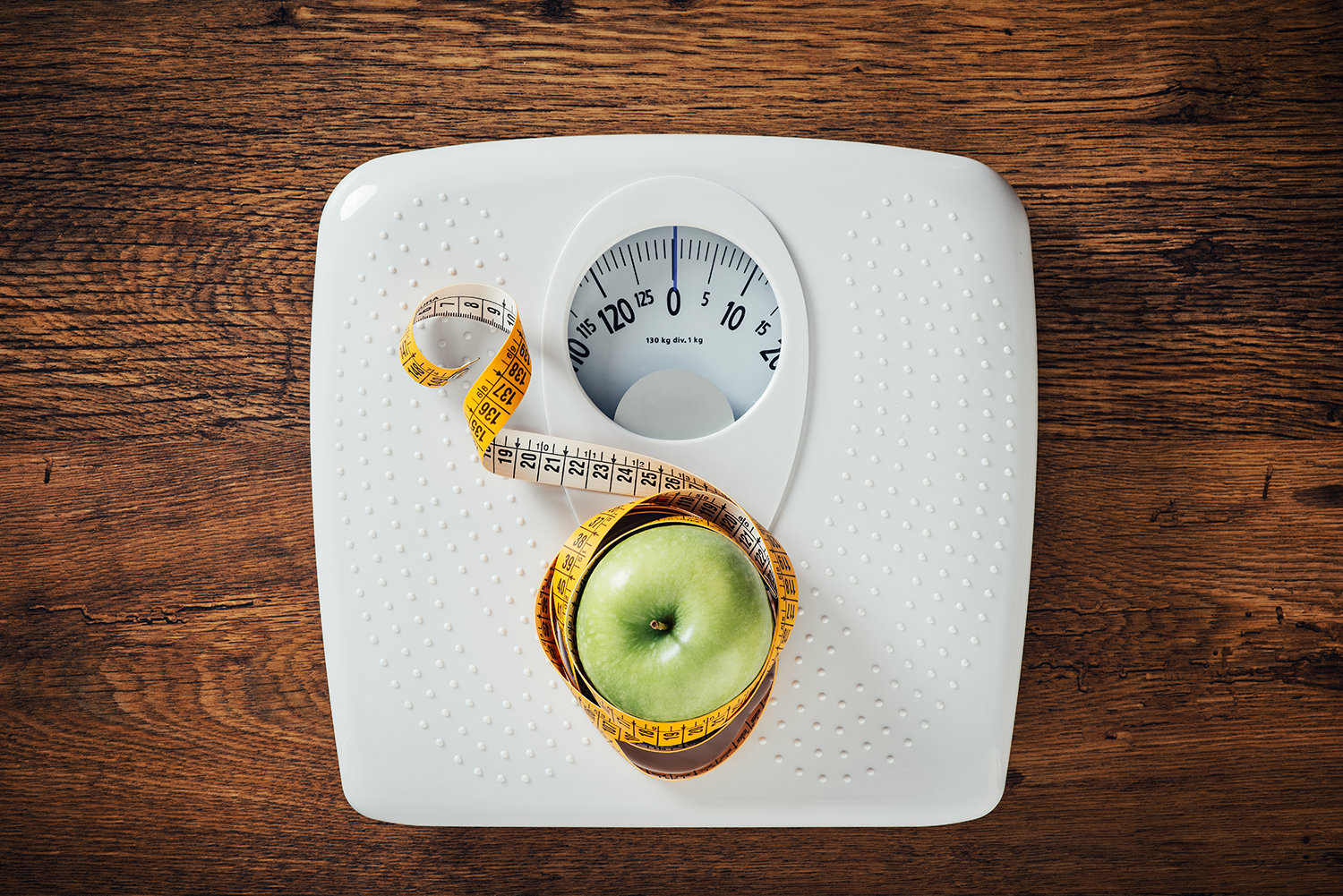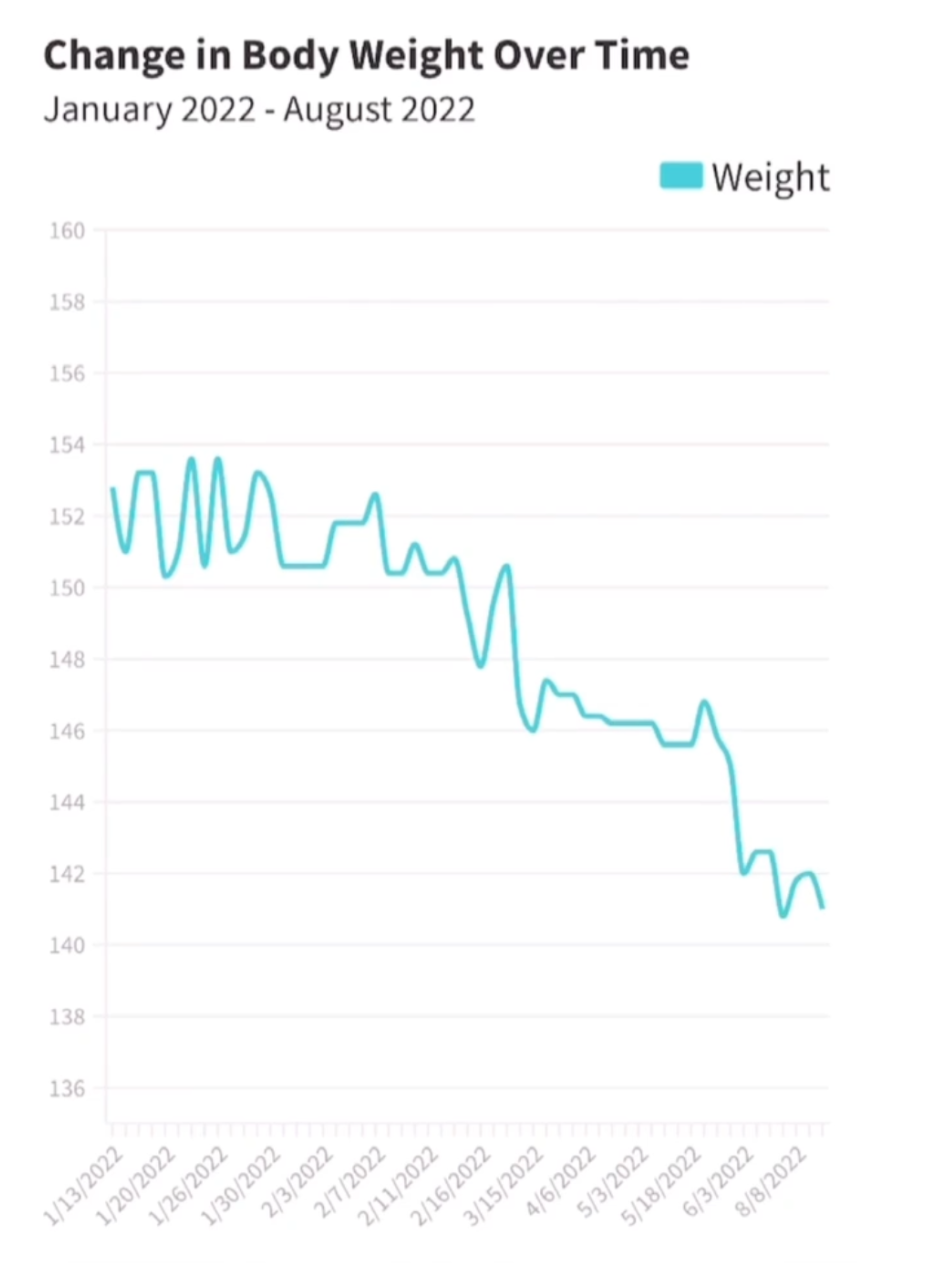Why Have I Stopped Losing Weight?
Fat Loss & Why You Should Trust the Process
This story might sound familiar. You want to lose weight, so you make some changes to your lifestyle. Perhaps you see some success right away, and you’re feeling pretty good! But then one day, you step on the scale, and your weight has increased. You feel discouraged and think, “I was on a roll! What happened? What am I doing wrong?”
Here’s the thing - you might not be doing anything wrong at all! Even as your scale weight fluctuates, there’s a good chance you’re still on the right track. If you have the proper strategy in place, it’s all about trusting the process.
In this article, you’ll learn about how to build a solid strategy for losing body fat so you, too, can start trusting the process.
How does fat loss work, exactly?
Fat is essentially just energy in storage. When our bodies burn fat for energy, fatty acids are broken down and converted into water and carbon dioxide. These byproducts of fat metabolism actually leave the body in the form of sweat, urine, and exhaled breath¹. Pretty wild to think about, right?
When fat is broken down and used up, our fat cells shrink down because they have emptied their reservoirs! Thus, we see a reduction in our overall size and body weight.
Sounds straightforward, right? But then what’s with all of these weight fluctuations?
Our weight fluctuates from day to day depending on a number of factors. High-sodium foods and carbohydrate-heavy meals can cause water retention, thus increasing our scale weight. If you weigh yourself too soon after a meal, you might see a higher scale weight, as well. On the flip side, your scale weight might drop if you are dehydrated.
In short, day-to-day weight fluctuation doesn’t necessarily indicate fat gain OR fat loss. What we need to look out for, instead, is the trend over time. This is where “trust the process” comes in.
What is the process and how can I trust it?
Fat loss is all about energy balance, where energy is measured in calories. When we maintain an energy (calorie) deficit, our bodies are going to start relying on our storage system (fat cells) for more energy. If we maintain a proper energy deficit, we will see a reduction in our body fat over time.
You may be thinking, “That’s great and all, but how do I figure out my energy deficit?” Well, I’ll tell you!
Step 1: Calculate your Resting Metabolic Rate
This is sometimes abbreviated as RMR² (often used interchangeably with basal metabolic rate, or BMR).
This is the minimum number of calories you burn while doing… well, nothing at all! You could think of this as the number of calories required for your body to function optimally. Eating less than your RMR can actually stunt your progress by convincing your body that it’s starving.
Warning: Math will be used below. But fear not - a calculator is provided at the end of this section for easy use.
Calculate your RMR:
Men: RMR = (10 × weight in kg) + (6.25 × height in cm) - (5 × age in years) + 5
Women: RMR = (10 × weight in kg) + (6.25 × height in cm) - (5 × age in years) - 161
Your body burns calories even when you’re resting!
Step 2: Calculate your Total Daily Energy Expenditure
This is sometimes abbreviated as TDEE³.
This reflects the estimated number of calories you burn while going about your daily life. This number will change depending on how active you are.
Calculate your TDEE:
TDEE = RMR x Activity Multiplier
Sedentary (little to no exercise + work a desk job) = 1.2
Lightly Active (light exercise 1-3 days / week) = 1.375
Moderately Active (moderate exercise 3-5 days / week) = 1.55
Very Active (heavy exercise 6-7 days / week) = 1.725
Extremely Active (strenuous training 2x / day) = 1.9
How active are you? Your job often plays a big factor.
Step 3: Determine the number of calories you should take in to maintain an appropriate energy deficit
A safe rate of weight loss is between 0.5 lbs and 2 lbs per week, which would require a deficit between 250 kcal and 1,000 kcal per day⁴.
You can subtract your RMR from your TDEE to see your options.
For example, let’s say
My RMR is 1,402 kcal.
My TDEE is 2,173 kcal.
Remember TDEE - RMR.
2,173 - 1,402 = 771.
This means I have 771 kcal of wiggle room to work with here! Here are my options:
Notice that the final option puts me under my RMR, so that option is out. Luckily, this means I still have three viable options to choose from.
As promised, here’s a calculator that can estimate your TDEE and RMR. Yay technology, right?
How can I use this information?
There are three ways to meet your energy balance requirements.
The first option is to manage this through nutrition. You can use calorie tracking apps like MyFitnessPal to keep an eye on your energy intake throughout the day. Then, you can make adjustments accordingly!
The second option is to be more active throughout the day. This is slightly less efficient. It can be tough to burn an extra 250 kcal per day, especially if you’re already active. Trying to burn an extra 1,000 kcal per day? That might even be impossible!
The third (and best) option is to do a combination of these two things! Taking in less energy through your diet while spending more energy with exercise is the recipe for success. You get the benefits of both strategies without having to make any extreme changes either way.
Ever seen the calorie trackers on treadmills? It can take hours of jogging to use the energy from a single meal.
Tips for success
Track your progress over time in a spreadsheet! It can be overwhelming at first, especially when we experience weight fluctuations. But the more data you have, the clearer the picture becomes! Tracking your progress with a line chart can help you visualize the trend in your body weight as time goes on.
For the most accurate and consistent numbers, you should step on the scale first thing in the morning. You haven’t eaten anything while you were asleep (probably) so we won’t need to worry about added weight from undigested food.
When adjusting your nutrition, prioritize whole foods like fresh vegetables, fruits, beans, nuts, seeds, whole grains, and other minimally processed foods. Basically, seek out foods without a bunch of additives!
Prioritize strength training when it comes to exercise. The more lean muscle mass on your body, the higher your metabolism! Plus, you get the other benefits, like stronger bones and reduced joint pain, to name a few.
Tracking your progress with a spreadsheet or fitness app can be a helpful way to see your change over time!
In conclusion
When you have concerns about weight fluctuation, double check your numbers. As you progress, your energy needs will change! If you don’t make adjustments along the way, you might find yourself with a scale weight that won’t budge.
If your numbers are correct and you are consistently following your plan, it’s time to relax and trust the process!
Easier said than done, right? If you still have doubts, reach out to the Hybrid Calisthenics team! We’re always happy to talk shop.
Meerman R, Brown AJ. When somebody loses weight, where does the fat go?. BMJ. 2014;349(dec16 13):g7257-g7257. doi:10.1136/bmj.g7257
Mifflin MD, St Jeor ST, Hill LA, Scott BJ, Daugherty SA, Koh YO. A new predictive equation for resting energy expenditure in healthy individuals. Am J Clin Nutr. 1990 Feb;51(2):241-7. doi: 10.1093/ajcn/51.2.241. PMID: 2305711.
National Academy of Sports Medicine. Resting Metabolic Rate: How to Calculate and Improve Yours
Centers for Disease Control and Prevention. About losing weight. About losing weight.









